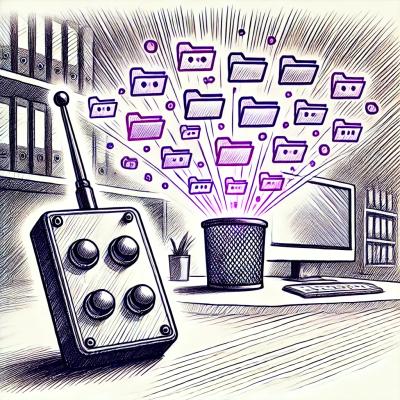
Security News
Vite Releases Technical Preview of Rolldown-Vite, a Rust-Based Bundler
Vite releases Rolldown-Vite, a Rust-based bundler preview offering faster builds and lower memory usage as a drop-in replacement for Vite.
bitbucket.org/dkolbly/logging
This is yet another logging package for Go. It is somewhat opinionated in an effort to produce logs messages that are both human and machine readable.
The primary purpose of this particular package was to experiment with
the context-passing pattern for logging, having had a mild allergic
reaction to rs/xlog style where the logger itself is included in the
context and a severe allergic reaction to the use of side-effects to
add annotation fields to the logging context. Hence, all the logging
functions here take a context.Context argument and can use the
current context to annotate the logging event. The logger itself is
still defined by the logging instance, which is a module.
Each logging instance (i.e., as produced by New()) defines a logging
module. By convention, modules follow Go package boundaries (i.e.,
each Go package defines its own logging instance.)
This package does include a global "backstop" logging output. In
addition, within a given context, logging be diverted or "tee'd" to
other outputs (see Tee())
By default, the output is in machine-readable JSON format (one line per JSON object) with a structure compatible with Splunk.
Indented for easy readability:
{
"@timestamp": "2018-04-04T06:16:07.948198432-05:00",
"level": "debug",
"loc": "hello.go:13",
"loc_file": "/tmp/hello.go",
"module": "hello",
"message": "Test",
}
If pretty output is configured (either directly, or by using SetHumanOutput() when stdout is a terminal), the data is more consumable by people.
06:53:49.975 DEBUG [hello|hello.go:15] Test
06:53:49.975 INFO [hello|hello.go:19] Here is something else: 75
Unlike earlier versions of logging I've worked with, this one models
the logging event as nothing more than a map. This is important for
output writers (the logging.Writer interface defines a Write
method that simply takes such a map) but nobody else should much care
about this representation.
package main
import (
"context"
"bitbucket.org/dkolbly/logging"
)
var log = logging.New("hello")
func main() {
ctx := context.Background()
log.Debugf(ctx, "Test")
}
Additional fields can be supplied by adding them to the context
using Set().
package main
import (
"context"
"bitbucket.org/dkolbly/logging"
)
var log = logging.New("hello")
func main() {
logging.SetHumanOutput(false, false, "DEBUG")
logging.PrettyShowExtraFields()
ctx := context.Background()
log.Debugf(ctx, "Test")
x := 75
ctx = logging.Set(ctx, "other", x)
log.Infof(ctx, "Here is another: %d", x)
}
That produces the following output in a terminal:
06:55:39.621 DEBUG [hello|hello.go:16] Test
06:55:39.621 INFO [hello|hello.go:20] Here is another: 75 other=75
Note that the extra field (other=75) is included in the human
readable output as a trailer on the message line. This is enabled
with ShowExtraFields().
Extra fields always appear in the JSON, and can override the standard fields.
FAQs
Unknown package
Did you know?

Socket for GitHub automatically highlights issues in each pull request and monitors the health of all your open source dependencies. Discover the contents of your packages and block harmful activity before you install or update your dependencies.

Security News
Vite releases Rolldown-Vite, a Rust-based bundler preview offering faster builds and lower memory usage as a drop-in replacement for Vite.

Research
Security News
A malicious npm typosquat uses remote commands to silently delete entire project directories after a single mistyped install.

Research
Security News
Malicious PyPI package semantic-types steals Solana private keys via transitive dependency installs using monkey patching and blockchain exfiltration.